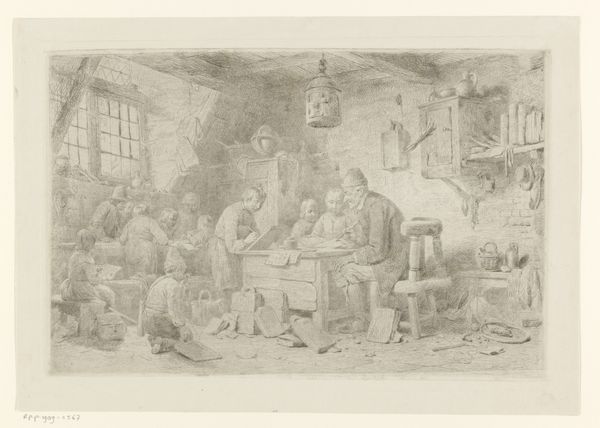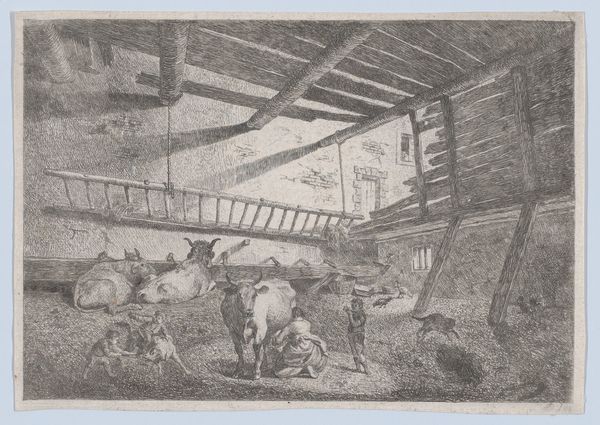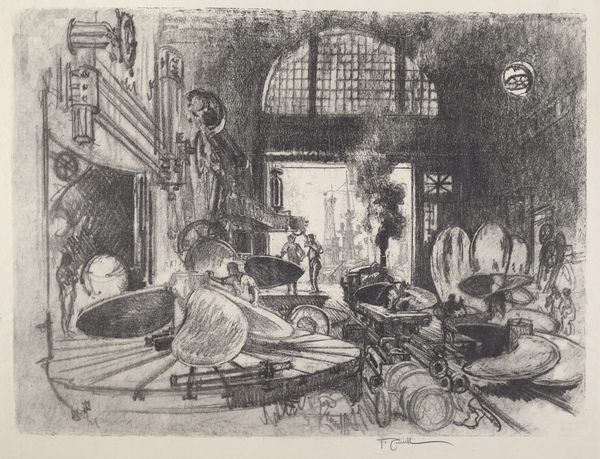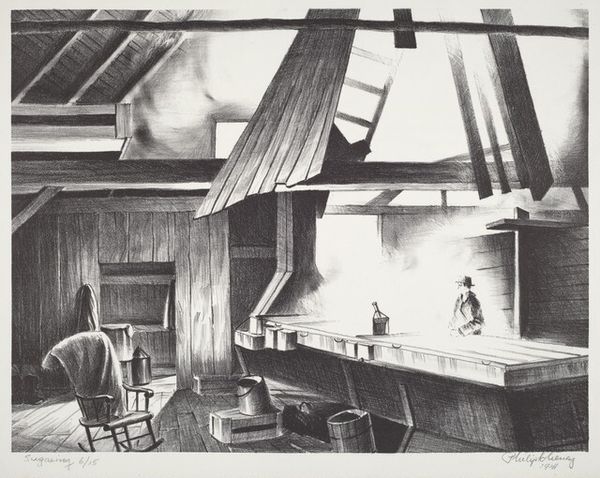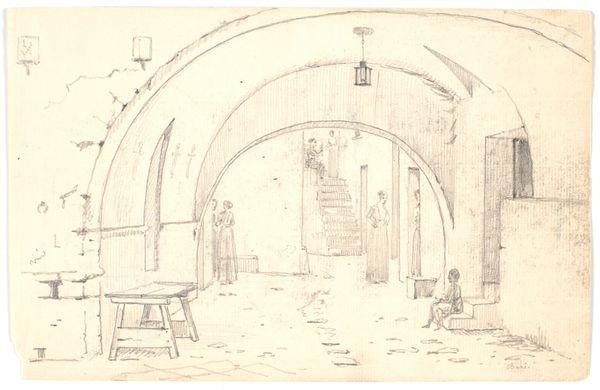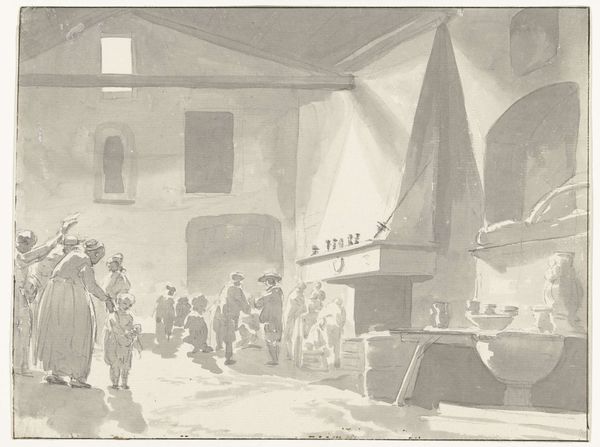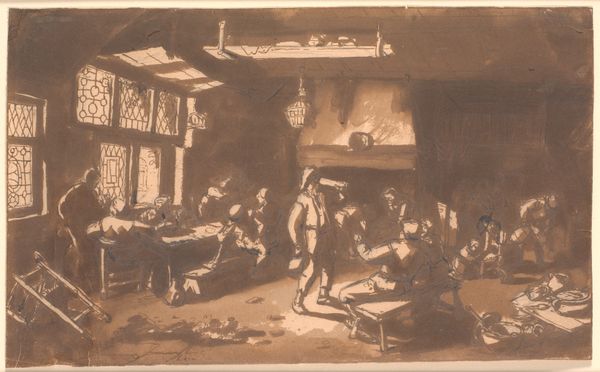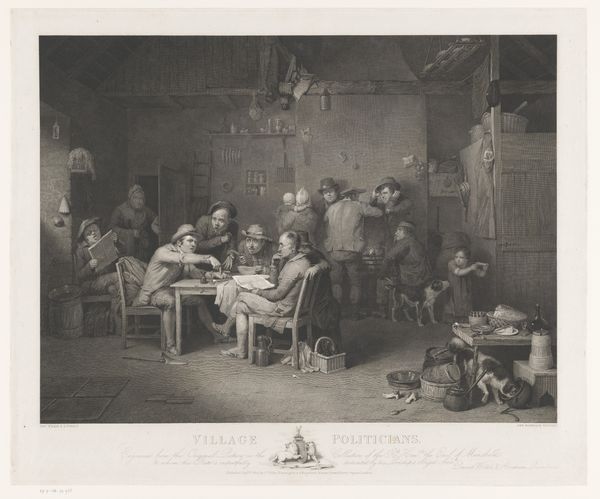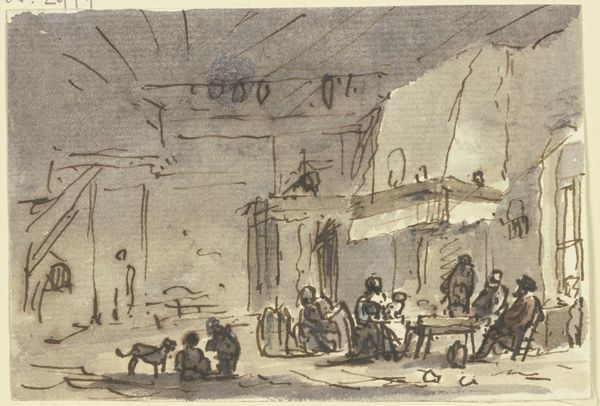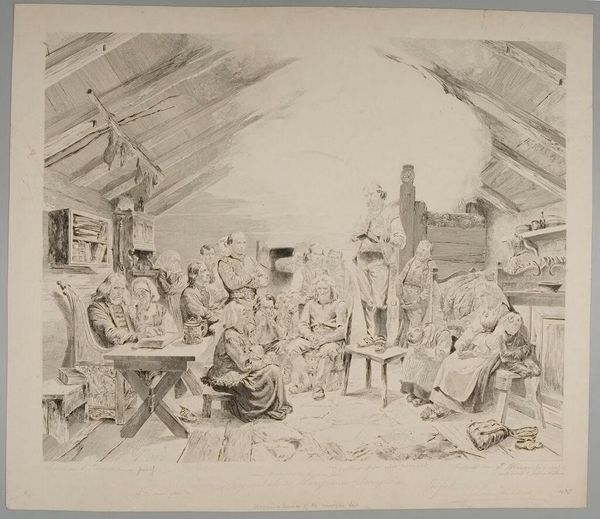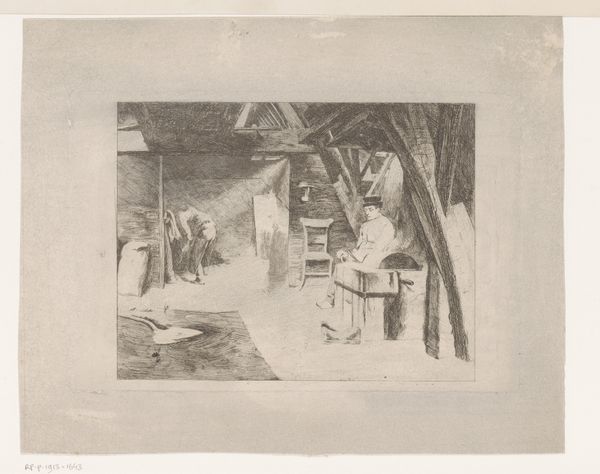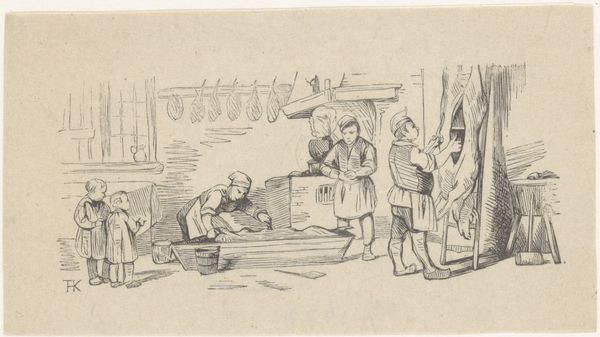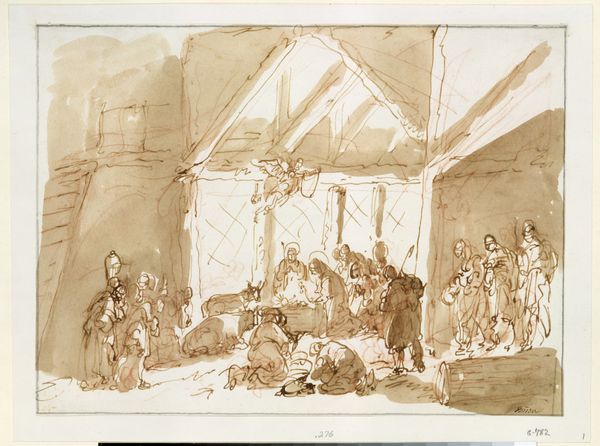
drawing
#
landscape illustration sketch
#
drawing
#
pen sketch
#
personal sketchbook
#
wedding around the world
#
ink drawing experimentation
#
pen-ink sketch
#
sketchbook drawing
#
watercolour illustration
#
storyboard and sketchbook work
#
sketchbook art
Dimensions: 290 mm (height) x 333 mm (width) (bladmaal)
Editor: So, this is Hans Smidth’s "Vaccination i en skole," dating from 1839 to 1917. It's a drawing, a sketch really, housed at the SMK. The muted tones give it a somber feel, even though it depicts something ultimately positive like vaccination. What's your take on it? Curator: The power of this piece lies in its direct connection to labor and social structures. The artist's choice of humble materials - ink and paper – echoes the everyday lives of the subjects depicted: the working class facing public health interventions. What do you observe about the scene's composition? Editor: It’s interesting; everyone seems huddled together, a mix of anxiety and resignation maybe? I guess these early vaccinations weren’t quite the seamless process we know today. Curator: Exactly. Smidth is showing us not just the act of vaccination, but the complex social landscape surrounding it. Note the location – a school. Education and health were intertwined projects of the state, influencing lives from a young age. What does the drawing's raw, unfinished quality suggest to you? Editor: That's a great point. I mean, maybe the roughness of the sketch emphasises that access wasn't for all. It almost seems as though these moments were quickly snatched from view and that it challenges the ideal that vaccines should be seamless in our daily life? Curator: Precisely. Smidth provides a look into these spaces but never commits to beautifying what must have been a daunting experience. What did you think of how this contrasts the idea that health is inherently egalitarian? Editor: Wow, I didn't initially consider that it's almost "anti-propaganda", but it totally makes sense from a materialist perspective. Curator: Indeed, examining the art through its process and social context unlocks a far richer understanding than just admiring its surface. Editor: Absolutely. I’ll definitely be thinking about the socio-economic aspects of art and the way labor practices and modes of creation shape our interpretations.
Comments
No comments
Be the first to comment and join the conversation on the ultimate creative platform.
